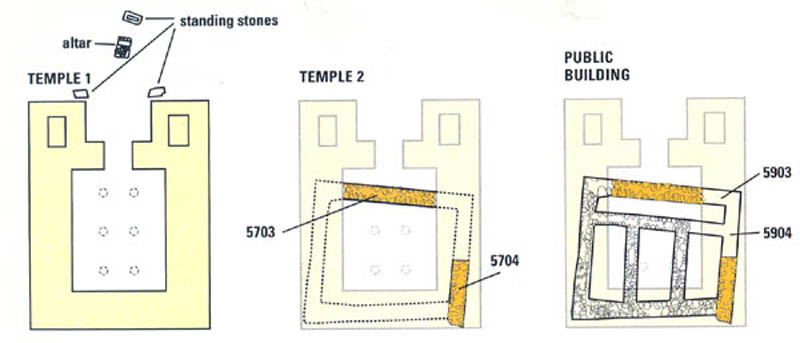Image Details

A temple lost—and found. G. Ernest Wright, who excavated Shechem nearly a half-century ago, believed that Shechem’s sacred area (see photo of sacred area) underwent three stages of development. The first, which he called Temple 1, was an impressive fortress-temple that fit the description of the Shechem temple in Judges 9, except that Wright believed Temple 1 had gone out of use long before the period of the Judges. Wright thought that by the time of Abimelech, Shechem’s sacred area was reduced to a much more modest structure, which he called Temple 2 (plan at center)—a building too small to hold the thousand inhabitants said to have been massacred there by Abimelech. Author Stager believes that Wright was misled by two walls, labeled 5703 and 5704, which Wright thought formed two sides of his supposed Temple 2. Stager counters that those two walls were actually part of a later building (plan at right) and that Temple 2 was wholly illusory. The great temple at Shechem, in his view, was in use well into the period of the Judges and was the site of the massacre carried out by Abimelech.
